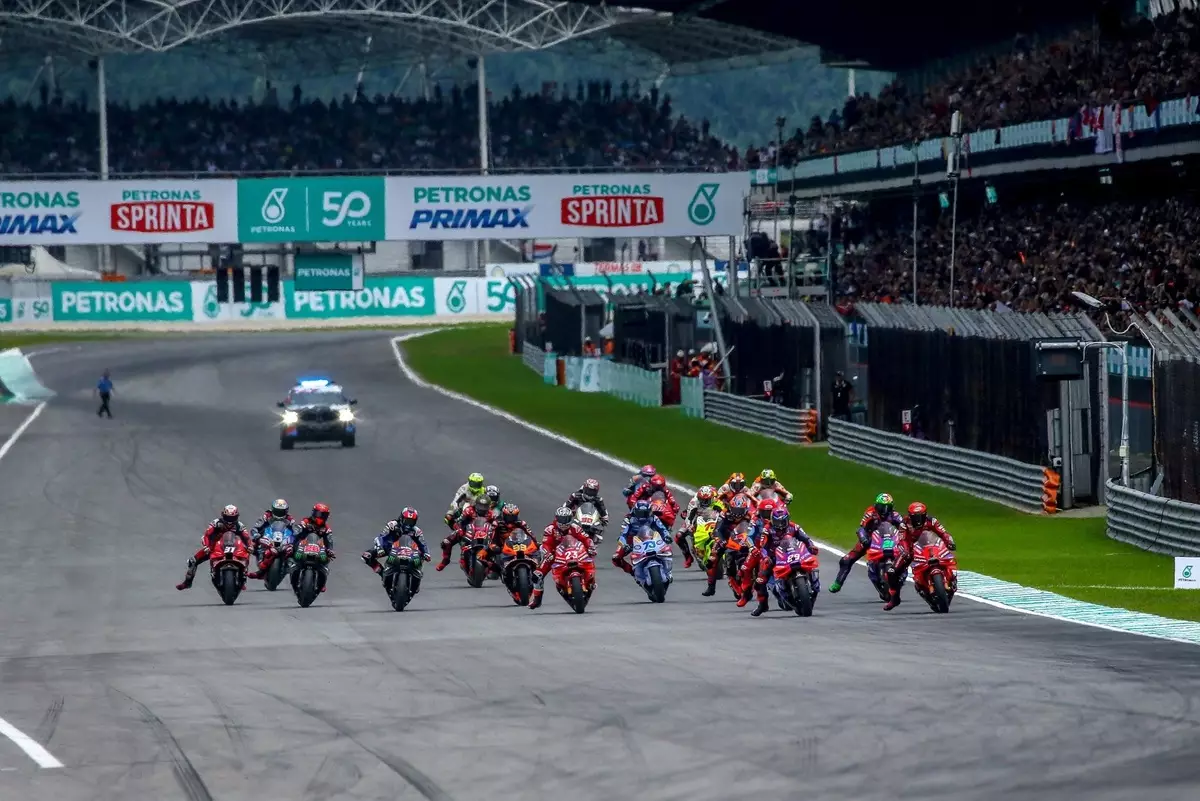MotoGP’s introduction of sprint races in the 2023 season has generated a wave of discussion and debate among fans, teams, and riders alike. Designed to inject excitement and drama into the racing weekend, this new structure has undeniably reshaped the traditional format that fans and teams have been accustomed to. The conversation surrounding the implications of this change has grown increasingly focused on the efficacy of the new format, calling into question whether it has enhanced or detracted from the overall experience of MotoGP weekends.
One of the key criticisms emerging from the introduction of sprint races is the diminished significance of the qualifying sessions. Traditionally, qualifying determined grid positions for the main race, serving as a high-stakes test of speed and strategy that captivated audiences. However, with the advent of sprint races, the thrill and anticipation surrounding qualifying have significantly waned. Francesco Guidotti, the former KTM team manager, emphasized this concern in an interview, suggesting that the current format forces teams and riders to expend excessive energy on Fridays, reducing their ability to perform effectively on Saturdays.
Guidotti proposes a hybrid format where results from both Friday and Saturday qualifying sessions inform the grid position for the sprint race. This approach could alleviate the stress experienced by teams, allowing them to manage their resources better over the course of the weekend. His critique highlights a common sentiment: that while sprint races have enhanced viewer engagement, they may have unintentionally eroded the pivotal role that qualifying traditionally played in elevating the drama of the race weekend.
The Media’s Changing Focus
An additional layer of complexity lies in the realm of media attention. With the new format in play, the media narrative has pivoted towards the sprint race, overshadowing the former status of qualifying. This shift raises questions about the potential long-term effects on press coverage and fan engagement. Guidotti pointed out that qualifying, once a multi-day storyline, is now relegated to a mere two-hour spectacle, failing to capture the audience’s sustained interest it once enjoyed.
From a media standpoint, this change creates challenges. The excitement surrounding the sprint overshadowing qualifying means that sponsors and media partners may not receive the desired exposure during this critical part of the weekend, which has historically been pivotal for building momentum toward the main event. Moreover, if the narrative remains focused on sprints, it could dissuade fans from appreciating the full spectrum of racing weekend excitement, effectively compartmentalizing viewer engagement.
The Challenge for Lower-placed Riders
Equally concerning is the impact of the sprint format on riders, especially those not contending for top-tier positions. The current detached nature of sprint results for riders placed outside the top nine has introduced a risk-averse mentality, thereby reducing the incentive to push for superior finishes. As Guidotti noted, the difference between a P12 or a P15 finish means very little if the outcome doesn’t contribute to the main race grid, inadvertently encouraging riders to adopt a more conservative racing style.
In essence, while a sprint race can be an exhilarating event, it raises questions about how to incentivize all riders to compete fiercely at all times. Making results from the sprint race crucial for the overall GP standings could lead to more aggressive racing tactics, benefiting both rider engagement and fan enjoyment.
As MotoGP navigates the challenges and opportunities presented by introducing sprint races, it becomes increasingly clear that the objectives of maintaining excitement must be balanced with the historical and strategic elements that define the series. The suggestions put forth by Guidotti represent constructive dialogue aimed at optimizing the weekend format while maintaining the elements that make MotoGP unique.
By reevaluating how qualifying, sprint races, and race days interconnect, stakeholders in the sport may find a formula that enhances the weekend experience—without sacrificing the integrity and drama that have made MotoGP a beloved spectacle for fans worldwide. Ultimately, the conversation surrounding this innovative yet contentious format will continue to evolve, as stakeholders seek to strike the right balance between tradition and innovation in the ever-changing world of motorcycle racing.


Leave a Reply